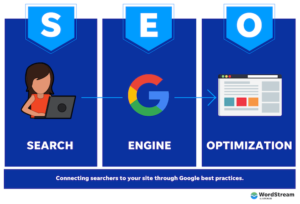Most roofing materials include warranties, but they will be void if proper maintenance isn’t done. Regular roof inspections and proper maintenance help prevent costly repair bills down the road.

Inspections should check for storm damage, shingle replacement, and signs of leaks. Also, inspections should include checking the gutters and downspouts to ensure they are clog-free. Click https://www.corpuschristiroofingco.com/ for more details.
Roll roofing is a useful option for homeowners and builders seeking budget solutions. However, it’s important to weigh its pros and cons to decide if this type of roof is the right fit for your home or building.
Generally speaking, this type of roofing is inexpensive and easy to install. This makes it a common choice for DIYers who don’t have much experience with roofing, especially since a basic roll of this material can cover 100 square feet in less than a day. The material is also light compared to other roofing materials, which can help ease the burden on a structure’s support system.
This makes it a good choice for low-sloped roofs, including patios, three-season rooms, sheds, gazebos, garages, and even barns. However, this kind of roof isn’t the best choice for steep roofs because it doesn’t handle heavy water flow well. In addition, this type of roof typically has a shorter lifespan than other roofing options, usually lasting for about 20 years before it needs to be replaced.
If you do choose to use rolled roofing on your roof, follow the manufacturer’s instructions for care and maintenance. You can prevent leaks and other problems by ensuring that the underlayment is in place, cleaning it regularly, and making sure that it’s properly sealed. You should also make sure that the gutters are in working condition and keep them clean. You should avoid walking on the roofing when it’s wet, and you should cover any nails that are exposed afterward to protect them from corrosion.
It’s important to remember that any roofing material requires maintenance to prolong its service life. Choosing the right type of roof for your building and following its manufacturer’s instructions for care is the best way to extend its longevity and curb appeal. While roll roofing might not be the diva of roof materials with its limited color choices, choosing the right shade can still improve your home’s look.
Composite Shakes
With a natural, rustic look and time-tested durability, cedar shakes and shingles have become the go-to roofing material for homeowners looking to boost their homes’ curb appeal. However, wood is prone to a number of issues that can lead to the need for expensive roof maintenance. These issues include fire, rotting, and insects. In order to address these concerns, synthetic composite shingles have been introduced. These shingle products are produced using a variety of chemical approaches and produce simulated cedar shakes and shingles nearly indistinguishable from the real thing.
Many manufacturers offer a wide selection of shingle colors and styles to help homeowners achieve the aesthetic they want for their home. Some products even mimic the chisel marks and hand-crafted look of natural shakes and slate tiles. In addition, composite shingles are often less expensive than natural materials and require less maintenance.
Unlike wooden shakes, composite shakes are not prone to mold, mildew, algae or insect infestations. They also do not rot or warp over time. Furthermore, they are fire resistant and can withstand impact. Because of this, some composite products can qualify for an insurance premium discount.
The benefits of using a composite shingle roof include a low-maintenance, long lifespan and the ability to lower insurance rates. However, if a homeowner is considering using these products, it is important to choose an experienced contractor to ensure the quality of the work. It is essential to have any existing roof problems addressed before installing the new shingles or shakes. In addition, proper roof ventilation is essential to prevent moisture buildup and extend the life of the roof.
In addition, a properly installed composite shake roof can save energy. These shingles are designed to reflect the sun’s rays, thus decreasing the amount of heat transferred into the house. They are also a good choice for homes located in areas that experience high winds.
Some of the most popular manufacturers of composite shakes and shingles are DaVinci, PlyGem, and CeDUR. These companies offer a wide range of color options that can match the appearance of most any cedar shake or slate roof. Their shingle products are also available in a wide array of widths to create the authentic look of natural cedar or slate. Additionally, some of these shingle products are made from recycled materials and are completely sustainable.
Slate
Slate is a natural, fine-grained, foliated metamorphic rock. It was originally mudstone or sedimentary shale that has undergone low-grade metamorphism due to prolonged pressure over time. The metamorphism changes the structure and composition of the original rock, transforming it into slate by adding a mixture of minerals that include micas (illite, smectite, and pyrophyllite), chlorite, quartz, and calcite. Other minerals that are sometimes found in slate include hematite, magnetite, graphite, and kaolinite.
Most of the slate mined today is used for roofing tiles because it does not absorb water, survives freezing and thawing temperatures well, and can be cut into sheets that are easy to work with. It is also used for flooring, decorations, and flagging. It is mined primarily in Europe, but also in Wales, northern England (especially the region around Llanberis and the village of Delabole), France, southern Germany, and the northeastern United States.
The rock is characterized by a variety of colors that range from lead gray to dark blue, purple, and even black. This range is determined by the type and amount of organic material and iron contained in the rock. It has a distinctive sheen that is caused by the mica and chlorite.
It is a very durable and attractive stone that can last for many generations. Slate roofs have been known to remain intact for over 100 years. Some even outlast the building they cover. Although, it is important to note that not all warranties on slate roofs cover the stone itself. It is important to have a roofer that is experienced working with this material.
The process of installing a slate roof can be difficult, so it is best to work with a company that is familiar with this material. They will have the tools to properly install the roof. These include a slater’s hammer, a tool for cutting and trimming the slate, as well as a guillotine for more precise cuts. These are specialty tools that most general roofers do not have. Using these tools improperly could result in damage to the slate and a shortened life for your roof.
Clay Tiles
Clay tiles are a beautiful choice for those who want to give their home an elegant look. These roofs are available in many different styles and colors. They are also eco-friendly because they are made from natural materials. They will not rot and are insect-resistant. If you’re thinking about having clay tiles installed on your home, it’s best to have a professional do the job. It’s a delicate process that requires precise measurements. The professionals will have to lay the tiles down in a specific pattern and ensure there are no gaps. Clay tiles are also quite heavy. They can be more than double the weight of asphalt shingles, so it’s important to have your home’s structure evaluated by a structural engineer before you install a clay tile roof.
Clay tile roofs are long-lasting and can withstand most weather conditions. They are energy-efficient and can save you money on your utility bills. Their insulating properties will keep the interior of your home cooler in the summer and warmer in the winter.
There are four main types of clay tile: mission style, interlocking shingle style, French style, and Spanish style. Each has its own benefits and drawbacks. The mission style, for example, has a rustic feel and is a good choice for homes with traditional architecture. The curved profiles of these tiles make them ideal for curving roofs. They also have excellent water shedding capabilities.
However, the mission style is also heavier than other types of clay tile. This means that it’s essential to have a structural engineer evaluate your home before you decide to have a mission style clay tile roof installed.
Clay tiles can develop black spots from algae and dirt over time. This can cause damage to the surface of the tile. It’s important to have a professional clean your clay tile roof regularly to prevent this from happening. The professional can use a special cleaning solution that will not damage the tiles. Avoid using harsh chemicals on your clay tile roof, as they can discolor the surface. You should also keep the temperature in your home low during the cleaning process.








